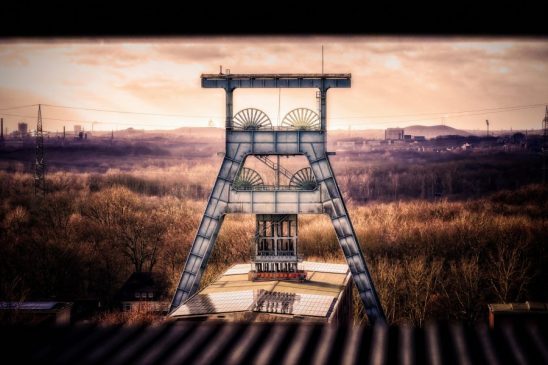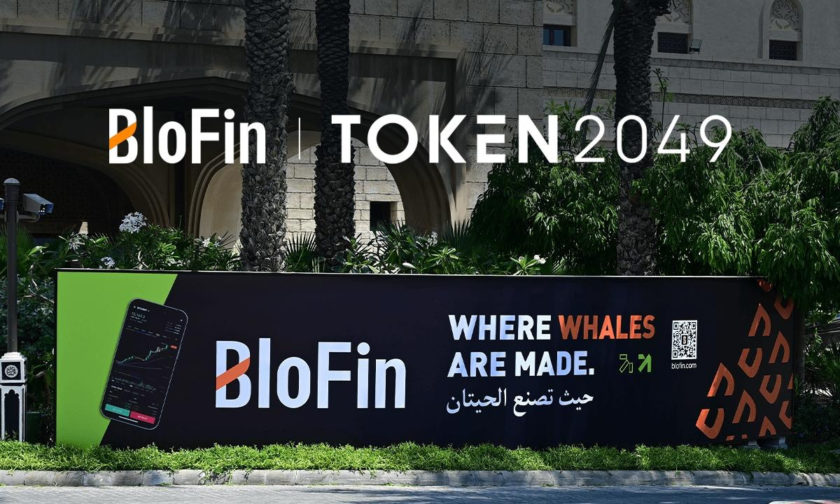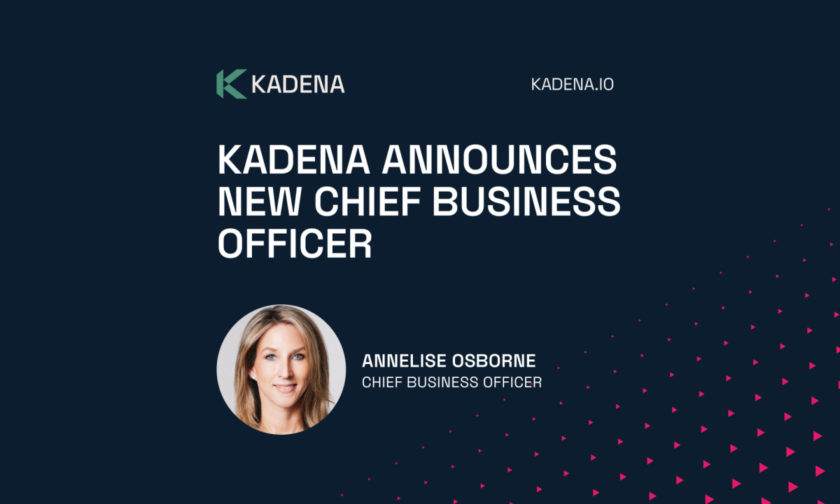‘Decentralization Is the Essential Foundation of Blockchain’, Exclusive Interview With Cudo Ventures’ Matt Hawkins
March 21, 2019 by Paul de Havilland
Matt Hawkins is a serial entrepreneur and founder and CEO of Cudo Ventures, a company whose GPU mining software is running on machines in over 130 countries around the world. We sat down with Matt to have a chat about crypto mining, the future of Proof of Work, and his views on the dominance of ASIC mining rigs.
Also read: AT&T Hit With $224 Million Crypto Theft Suit Over Alleged SIM Swap
Join the Bitsonline Telegram channel to get the latest Bitcoin, cryptocurrency, and tech news updates: https://t.me/bitsonline
Subscribe to the Bitsonline YouTube channel for more great interviews featuring industry insiders & experts
Competing With ASIC
Paul de Havilland: We all know that Proof of Work coin mining can be easily dominated by ASICs and larger mining companies. How can you compete with them?
Matt Hawkins: While ASICs are highly efficient in certain circumstances, their Achilles Heel is that they can only mine coins on a single algorithm. When the dominant coins change their Proof Of Work algorithm, or drop their block reward as Ethereum did joining the hard fork, the hardware instantly becomes unprofitable and the ASIC unit redundant.
In response to this wastefulness, communities have long fought ASIC dominance–Constantinople disappointed Ethereum GPU miners by not proceeding with Progressive Proof of Work, which would have readdressed the ASIC-GPU balance, and other crypto assets such as Monero have declared war on ASICs and are resisting ASICs by changing their algorithm every 6 months.
Many other algorithms are substantially harder to build ASICs for, such as X16R, which changes between 16 algorithms, mining in a different order each time. For this reason, FPGAs have become more attractive for those who can afford the capital expenditure and obtain the Bitstreams required to reprogram them.
Cudo Miner is currently focused on mining with GPUs, which have the advantage of being highly flexible and adaptable to changes in workload. Our software helps GPU and CPU miners to adapt to changes on a daily basis–from switching algorithm in the event of a fork, to mining the most profitable coin based upon market dynamics.
In the current climate, most people will buy a GPU for gaming and choose to mine. But for the same reason, building a GPU mining rig offers a greatly reduced risk because the graphics cards have a substantially higher aftermarket value than ASICs.
What’s At Stake For Proof of Work?
PdH: Is Proof of Work going out of favor? And if so, will that impact Cudo?
MH: There’s a lot of enthusiasm for Proof of Stake, as proposed by Vitalik Buterin for the Ethereum Istanbul hard fork. NEM’s Proof of Importance is also interesting because it’s designed to be energy efficient and doesn’t require specialist hardware–and its ‘Delegated Harvesting’ rewards contributors for consistent support of the network rather than raw compute power.
But that doesn’t mean that Proof of Work is dead. The new Mimblewimble coins Grin and Beam are more lightweight than bitcoin, but they still chose to employ Satoshi Nakamoto’s Proof of Work to create distributed trustless consensus and solve the double-spend problem.
Cudo Miner’s focus is on Proof of Work because mining provides users with monetization of their hardware, but if they are offered alternatives that are more profitable and satisfy their broader aspirations, they will try something new.
All decentralized networks rely upon computing resources, and provided there are incentives for participation, there are ways software such as Cudo Miner can help make it easier for enthusiasts who want to support those networks to get started, and for bigger commercial operations to easily manage how their resources are utilized.
The crypto technology market is evolving and how you earn revenue is evolving. Cudo is already developing solutions which are not typical Proof of Work. This will make substantially better use of hardware.
The User Friendly Interface of Cudo
PdH: Your interface is very user friendly, and your closest rival lacks the ability for users to adjust the percentage power of their CPUs/GPUs dedicated to mining. Is that a technically difficult feature to add? Because it seems intuitive and obvious, but you’re the first to my knowledge to do it.
MH: We come from a service provider background managing environments supporting hundreds of thousands of servers and millions of users. We see this as how the industry should be, so we designed everything from the ground up this way.
It’s about making life as easy as possible for the user. What you see at the moment is just the tip of the iceberg regarding the features we have coming out in the next few months. It’s always a lot harder to retrofit these types of solutions in.
PdH: What are your thoughts, generally, on mining centralization? Is this a threat to the integrity of the network? Is it just capitalism at play? Do you think it’s healthy?
MH: Decentralization is the essential foundation of blockchain, and block rewards are what made it reach critical mass. However, as the market value of bitcoin soared it attracted huge capital investments in ASIC mining which caused centralization of hashing power.
This had a knock-on effect making it impossible for widespread GPU miners to compete for a slice of the rewards, so they moved on to mining other currencies. This, as was widely reported, threatened bitcoin with a 51% attack scenario, where the entire validation of a decentralized network is lost.
But as more players come into the space and there is more choice, then greater decentralization follows. Decentralization is key to blockchain. You need people developing platforms and solutions that make life easier for mass adoption of mining and cryptocurrency.
As the cryptocurrency ecosystem grows over time, the stability of the networks and their mining foundations is what will bring further adoption. I think designing and nurturing a distributed network is one of the biggest challenges for any crypto asset network, and we will see a lot more innovation because blockchain networks are still very much a technology frontier.
Mimblewimble–Hype or Real Promise?
PdH: What are your thoughts on Mimblewimble coins? Are you excited by the scalability possibilities they offer? Or is it all meaningless hype?
MH: For me, Mimblewimble is an exciting protocol! The confidential transactions enable an improved level of privacy compared to many of the current privacy coins. One of the issues with many of the blockchains is the growth of the size of the blockchain, and specifically the size of the locally stored file. Mimblewimble has a level of pruning built in which will help alleviate this. This can enable faster transactions with less impact on blockchain size.
Of course, at present it has a few drawbacks. For example, it currently does not support scripting, and if this is implemented it would be a substantial benefit. The Beam project has put forward suggestions around this.
For the rest of the crypto community, the immediate difficulty is in transferring funds. With GRIN, for example, the receiving wallet must be online at the same time to receive funds. This can be inconvenient, but it also has a security benefit because it reduces the risk of someone managing to get your private key.
It’s still early days, but I think the protocol and the current coins have great potential.
PdH: Cudo–I’ve used it myself–is not profitable unless you get free electricity and don’t mind burning through your laptop’s lifespan. Is Cudo addressing this conundrum somehow, or just waiting for the next bull market like everyone else?
MH: The profitability of mining varies hugely depending on what hardware you’re using, how much you’re paying for your energy, and of course what the market is doing. For popular crypto assets, you will need more than a laptop to mine–a gaming rig with a powerful modern graphics card such as a NVIDIA GTX 1070Ti is really the baseline for profitability and new cards such as the NVIDIA GTX 2070 or Radeon 7 are particularly strong for mining.
Right now, the markets aren’t favorable. Ravencoin is currently one of the most profitable coins to mine, but it changes daily, and new coins can present a strong initial reward.
There are lots of people equipped with the right hardware and energy tariff, for whom it’s about eking the best out their rigs during the bear run. Anyone who is mining will tune their GPUs and overclock for maximum performance per Watt, within safe heat constraints! The miner’s priority is keeping everything ticking over and having the confidence that they are earning day and night, and not losing money from their mining software crashing or because they joined a dodgy mining pool.
Commercial mining farms tend to cash out in fiat as they go, or at least enough to cover their fees, but GPU rig miners are typically more engaged in the community and choose to mine and hold their preferred currency during the downturn, waiting with the rest of the crypto community for the market to pick up.
People need to make their own good choices, and Cudo makes it easier to mine new coins and automatically switch to the most profitable coin. While the market is down, everyone is waiting for it to rally, but Cudo will always give the most transparent and accurate projected earnings for miners, with constant developments coming out and improving profitability every week.
Sound off below. Any users of Cudo Miner? What has your experience been like?
Images via Pixabay







